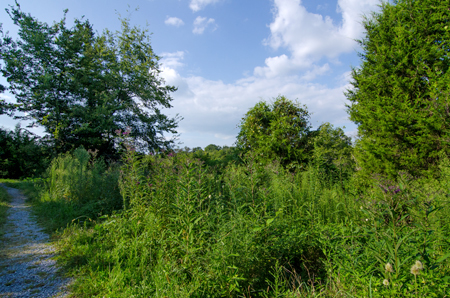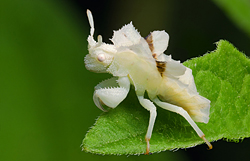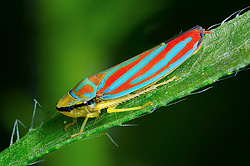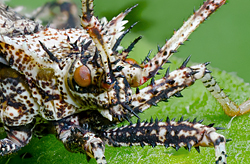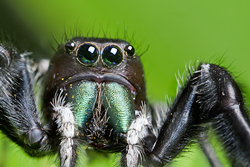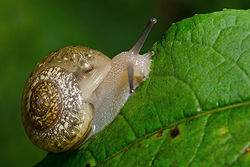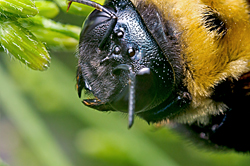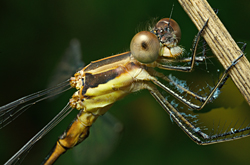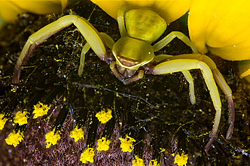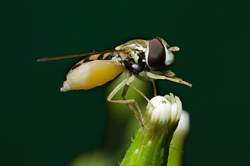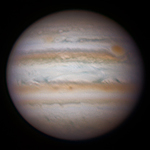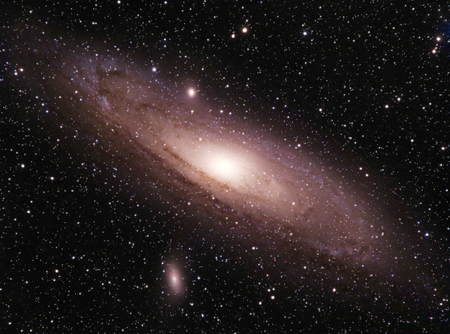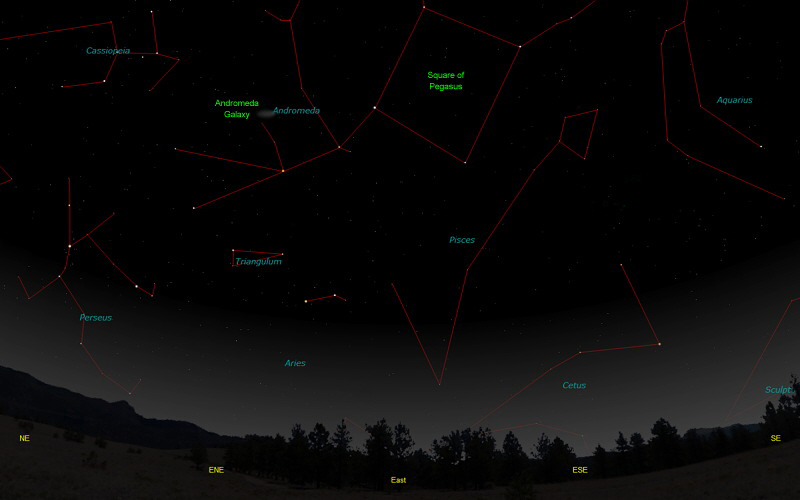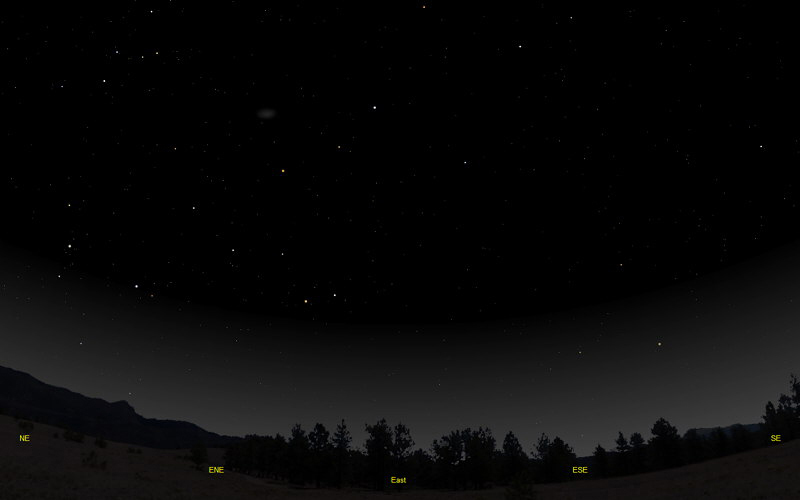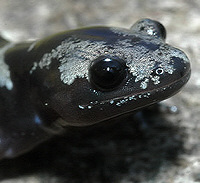The purpose of this feature is to give scout leaders, educators and naturalists an idea of some of the natural events coming up each month. We will try to cover a variety of natural events ranging from sky events to calling periods of amphibians, bird and mammal watching tips, prominent wildflowers and anything else that comes to mind. We will also note prominent constellations appearing over the eastern horizon at mid-evening each month for our area for those who would like to learn the constellations. If you have suggestions for other types of natural information you would like to see added to this calendar, let us know! Note: You can click on the hyperlinks to learn more about some of the featured items. To return to the Calendar, hit the "back" button on your browser, NOT the "back" button on the web page. All charts are available in a "printer friendly" mode, with black stars on a white background. Left clicking on each chart will take you to a printable black and white image. Please note that images on these pages are meant to be displayed at 100%. If your browser zooms into a higher magnification than that, the images may lose quality. Though we link book references to nationwide sources, we encourage you to support your local book store whenever possible. Notes and Images From August 2013
A Small Window to the World:
We wanted to document some of the many creatures we found in our new habitat. We decided it would be fun to limit the size of the field of view shown in each image to 1/2 to 3/4 of an inch wide. This allows the camera to capture an amazing amount of detail. I made a quick circuit of the habitat on most days in August, and included below are just a few of the creatures I found. This month we're using a feature called Zoomify to give you a sort of virtual magnifying glass to examine each thumbnail image below. Keep in mind that the real field width of the thumbnails below is very small. The approximate window width is shown below each thumbnail image. Click on each thumbnail to Zoomify it. Once the image opens up you can use the wheel on your mouse or the controls at the bottom to enlarge the image. You can also click and drag with the mouse to move around the image. After each magnification change, wait a second or two while the view sharpens. Zoomify is best viewed with a laptop or desktop. Tablets and mobile devices may not have flash, which is required to use this version of Zoomify. With this virtual magnifying glass you get to see details down to a fraction of a thousandth of an inch while not having to deal with mosquitoes, ticks or chiggers. At this magnification (up to 100x) leaves become spongy mats. The Ironweeds tower like leafy skyscrapers and brilliantly colored jumping spiders leap from one story to another, like, well, Spiderman. Of course, it's really the other way around. The monsters that inhabit the summer blockbuster movies take their inspiration from the natural world. Take a close look at the Helmeted Squash Bug nymph below. There is intense competition in this world, a war of sorts. Ambush bugs kill prey as large as Honey Bees, Crab Spiders wait on the flower petals for the unwary, and jumping spiders attack with lightning speed. But it's all relative; the biggest and baddest of these creatures can be snapped up by a hungry Mockingbird in one gulp.
I found this Jagged Ambush Bug on the tip of a Ground Cherry leaf. Only about a quarter of an inch long, it looked like a miniature white dragon on a crag surveying the leafy canyons below. This image was made using a stepper motor driven focusing rail.
Jagged Ambush Bugs can be
beneficial in preying on pest insect species, but they can also prey on
helpful species as well. See the image below. They pierce
their prey with a feeding tube that unfolds and extends outward.
A friend who has much more experience with insects than I do told me to always make a mental note of an insect on a flower that does not appear to move for some time. Such insects can be the prey of Jagged Ambush Bugs. On August 18th, I noticed a Honey Bee that was not moving. Since we love Honey Bees, it hurts a little to look at this image. Ambush Bugs inject a poison that quickly kills their victim. This allows them to take prey much larger than themselves. They are amazingly efficient predators.
Scarlet and Green Leafhoppers were one of the more colorful denizens of our small weedy habitat, and we saw many of them. Only about 3/8 of an inch long, you have to look closely to see the colors with the naked eye. If you get too close they will disappear faster than the eye can follow, usually winding up on another nearby leaf. Most that we see have greenish stripes on the back, with light blue stripes along the sides. Leafhoppers feed on the juices of weeds and cultivated plants. Their saliva damages the plant, causing the leaves to wilt. Eggs are laid in soft plant tissues in the spring. Adults overwinter in leaf litter on the ground.
I found this Helmeted Squash Bug nymph on August 5th. Despite its fierce appearance it is a vegetarian, feeding on plant juices. Its head is actually pretty tiny, and I did not see its face until I enlarged the images - that was quite a surprise! This image was made using a stepper motor driven focusing rail. Be sure to check out the "high tech" antennae. Helmeted Squash Bugs can be pests in gardens, and their feeding causes plant leaves to wither.
I came across this unknown fly species on August 17th. Like the Helmeted Squash Bug above, I could not see the face well and though I could see the eyes were red, the vivid horizontal stripes across the eyes were not visible. One of the things I enjoyed the most about my imaging this month was that I never knew exactly what I would see when I enlarged the images. Using a reversed lens on the camera meant that the view through the viewfinder was fairly dim. Like most of the images shown this month, this was a handheld exposure with flash.
You have to love jumping spiders. As you approach they turn and fix their enormous eyes on you. Not easily intimidated, they often jump onto the camera lens. They come in an amazing variety of colors. Though you can't see it in the image at left, this Phidippus clarus has bright orange stripes on the sides of its abdomen. Notice that in its eye you can see the reflection of the leaf on which it is sitting. Jumping spiders range up and down their leafy habitat like an acrobat, trailing a line of silk behind them. They are said to have the sharpest vision of all of the spiders. Though harmless to humans, they can subdue prey many times their size.
I came across this unknown snail species on August 11th. Though it was a little larger than most of the subjects for this month's Natural Calendar, I included it because of the beauty of the scrollwork on the shell. Land snails like this one are terrestrial gastropod mollusks that have shells. The upper pair of stalks support the eyes. The lower and shorter set of stalks support the olfactory organs. The image at right has a window width of around an inch, larger than the rest of the images shown.
I found this Common Virtuoso Katydid on August 26th. When I was imaging it, I thought it might be an Oblong-winged Katydid, which is a common species at our farm. When I enlarged the image and saw its eyes, I knew I had something different. To the naked eye, the most prominent feature of this katydid is that the lower portion of all of its legs are brown rather than green. It is the only member of its genus (Amblycorypha, the round-headed katydids) that has this trait. Its song is more varied than others in its family, hence the common name. Katydids hear through an opening in their forelegs, and you can see this opening well in the above image.
I imaged this Bumblebee on August 22nd as it was going from one Horseweed blossom to the next. Seen are both the large compound eyes and the smaller simple eyes. You can also see well the soft hair-like structures, called pile, that cover their body. The name Bumblebee is a combination of the words Bumble (meaning to hum, buzz, drone or move ineptly) and bee. The droning sound is not caused by the movement of the wings, but rather the vibration of the bumblebee's flight muscles.
I came across this immature male Southern Spreadwing on August 24th. The spreadwings are damselflies in the family Lestidae, and are a group that hold their wings in a spread position at rest, rather than clasped behind them like other damselflies. The Southern Spreadwing is fairly common across much of the southeast. As with many damselflies, a careful look at the clasping parts at the tip of their tails is necessary in identification. This one had wandered a good ways from our pond, where dragonflies and damselflies are numerous.
This crab spider is ready to embrace any unwary insect that wanders too close to its position on a coneflower. I found this one on August 2nd. They were quite common on the coneflowers and also on the flowers of the Teasel. Crab spiders have no need to spin webs to capture prey, although the female produces a silken sac for her eggs. There are more than 200 species of crab spiders in North America.
It's hard not to like the little Toxomerus Hover Fly. It does not bite or sting, and feeds by sipping the nectar of flowers like the Horseweed flower at left. Brilliantly colored, they are also fine flyers. If this were not enough, their larvae feeds on aphids, a common garden pest. In fact, one source states that they are probably as important as ladybug beetles in controlling aphid populations. So the next time one hovers near you, admire it rather than batting it away!
Sky Events for September 2013: The Autumnal Equinox, marking the beginning of fall in the Northern Hemisphere, occurs at 3:44 pm CDT on September 22nd. The Harvest Moon, the full Moon closest to the Autumnal Equinox, occurs on September 19th. Evening Sky: Saturn is quite low in the southwest at dusk at the beginning of September, only 20 degrees above the southwest horizon, in Libra. Bright Venus is easy to see in the western sky at dusk throughout September. Look for it about 30 minutes after sunset. Morning Sky:
Jupiter rises around 1:52am CDT at the beginning of the month in Gemini. For the best telescopic views, wait until just before dawn to view the planet. Mars rises around 3:19am CDT in Cancer. Too far away to show much detail through a telescope, it is only about 4 seconds of an arc in apparent diameter. All times noted in the Sky Events are for Franklin, Tennessee and are Central Daylight Time. These times should be pretty close anywhere in the mid-state area. Constellations: The views below show the sky looking east at 10:00pm CDT on September 15th. The first view shows the sky with the constellations outlined and names depicted. Star and planet names are in green. Constellation names are in blue. The second view shows the same scene without labels. Pegasus appears higher above the eastern horizon, as does Andromeda. Perseus is above the horizon now, and Cetus is also beginning to appear. The faint stars of Pisces should be easier to pick out this month.
Find the "Square of Pegasus" and work your way outward from it to the constellations around it. See if you can pick out the faint glow of the Andromeda Galaxy, over 2 million light years away! When you look at this galaxy you're seeing light that began its journey to us in the Pleistocene epoch. To get the best view, wait until the galaxy climbs high in the sky. The Andromeda Galaxy was first shown on star charts prepared in 905AD by the Persian astronomer, Al Sufi, and was referred to as the "Little Cloud." That describes well its appearance to the naked eye. Binoculars will greatly improve your view, as will driving out of the city and finding darker skies. Simon Marius, in 1610, was among the first to observe the Andromeda Galaxy through a small telescope. He compared its soft glow to "the light of a candle shining through horn." In dark skies, those using small telescopes may pick out the small satellite galaxies M32 (above and left of the nucleus of M31 in the above image) and NGC 205 (below). A faint tidal bridge connects NGC 205 to Messier 31. Our Milky Way Galaxy and the Andromeda Galaxy are approaching each other and are expected to collide in approximately 4.5 billion years. The two galaxies may merge into a single giant elliptical galaxy at that time.
On Learning the Constellations: We advise learning a few constellations each month, and then following them through the seasons. Once you associate a particular constellation coming over the eastern horizon at a certain time of year, you may start thinking about it like an old friend, looking forward to its arrival each season. The stars in the evening scene above, for instance, will always be in the same place relative to the horizon at the same time and date each September. Of course, the planets do move slowly through the constellations, but with practice you will learn to identify them from their appearance. In particular, learn the brightest stars for they will guide you to the fainter stars. Once you can locate the more prominent constellations, you can "branch out" to other constellations around them. It may take you a little while to get a sense of scale, to translate what you see on the computer screen or what you see on the page of a book to what you see in the sky. Look for patterns, like the stars that make up the "Square of Pegasus." The earth's rotation causes the constellations to appear to
move across the sky just as the sun and the moon appear to do. If you go
outside earlier than the time shown on the charts, the constellations will be
lower to the eastern horizon. If you observe later, they will have climbed
higher. As each season progresses, the earth's motion around the sun causes the constellations to appear a little farther towards the west each night for any given time of night. If you want to see where the constellations in the above figures will be on October 15th at 10:00pm CDT, you can stay up till midnight CDT on September 15th and get a preview. The westward motion of the constellations is equivalent to two hours per month. Recommended: Sky & Telescope's Pocket Star Atlas is beautiful, compact star atlas. A good book to learn the constellations is Patterns in the Sky, by Hewitt-White. You may also want to check out at H. A. Rey's classic, The Stars, A New Way to See Them. For skywatching tips, an inexpensive good guide is Secrets of Stargazing, by Becky Ramotowski. A good general reference book on astronomy is the Peterson
Field Guide,
A Field Guide to the Stars and Planets, by Pasachoff. The book retails for around $14.00. Starry Night has several software programs for learning the night sky. Visit the Starry Night web site at www.starrynight.com for details. The Virtual Moon Atlas is a terrific way to learn the surface features of the Moon. And it's free software. You can download the Virtual Moon Atlas here. Cartes du Ciel (described in the monthly notes above) is a great program for finding your way around the sky. It is also free, and can be downloaded here. Apps: We really love the Sky Safari 3 Pro application described here. For upcoming events, the Sky Week application is quite nice. Both apps are available for both I-phone and Android operating systems.
Amphibians:
The frog and toad choruses start waning in September but some frogs and toads are still calling. Another name for the Spring Peeper is the "Autumn Piper", and these small frogs can be heard calling from patches of woods in the fall. Listen also for a very dry, scratchy version of the Upland Chorus Frog's song on rainy days and nights in September. We've been hearing Southern Leopard Frogs quite a bit this August, and they should really pick up in September as the cooler temperatures mirror their early spring breeding period. You can locate many of the frogs and toads that have been calling more frequently earlier in the year by driving the back roads slowly on rainy nights.
This is a two person job. One person watches the road for amphibians and one person looks out for other vehicles. Anything over about 15mph is "speeding." On wet nights in September, look for breeding Marbled Salamanders in flooded woodland areas. We found one such area where we had previously heard a breeding chorus of Upland Chorus Frogs. Recommended: The Frogs and Toads of North America, Lang Elliott, Houghton Mifflin Co. Archives (Remember to use the back button on your browser, NOT the back button on the web page!) Natural Calendar February 2013 Natural Calendar December 2012 Natural Calendar November 2012 Natural Calendar September 2012 Natural Calendar February 2012 Natural Calendar December 2011 Natural Calendar November 2011 Natural Calendar September 2011 Natural Calendar February 2011 Natural Calendar December 2010 Natural Calendar November 2010 Natural Calendar September 2010 Natural Calendar February 2010 Natural Calendar December 2009 Natural Calendar November 2009 Natural Calendar September 2009 Natural Calendar February 2009 Natural Calendar December 2008 Natural Calendar November 2008 Natural Calendar September 2008 Natural Calendar February 2008 Natural Calendar December 2007 Natural Calendar November 2007 Natural Calendar September 2007 Natural Calendar February 2007 Natural Calendar December 2006 Natural Calendar November 2006 Natural Calendar September 2006 Natural Calendar February 2006
Natural Calendar December 2005
Natural Calendar November 2005
Natural Calendar September 2005
Natural Calendar February 2005
Natural Calendar December 2004
Natural Calendar November 2004
Natural Calendar September 2004
Natural Calendar February 2004
Natural Calendar December 2003
Natural Calendar November 2003
Natural Calendar September 2003 Natural Calendar February 2003 Natural Calendar December 2002 Natural Calendar November 2002 Nature Notes Archives: Nature Notes was a page we published in 2001 and 2002 containing our observations about everything from the northern lights display of November 2001 to frog and salamander egg masses. Night scenes prepared with The Sky Professional from Software Bisque All images and recordings © 2013 Leaps |
|||||||||||||||||||||||||||||||||||
